MARKET OVERVIEW
The Global Fish Gelatin is the most important aspect in the food, pharmaceutical, and cosmetic industries. Its market is an innovative one and adaptable to ever-growing demand in terms of clean labels, allergens, and religion. The world is slowly leaning toward ethical and sustainable sourcing, and this fish gelatin industry will, in all probability, expand its applications and adjust to emerging consumer preferences.
Fish gelatin, primarily extracted from the skins and bones of fish, offers excellent functional benefits in terms of excellent gel-forming abilities, stability, and compatibility with a wide range of formulations. These benefits have established it as a crucial ingredient in gummies and marshmallows to encapsulate vitamins and advanced skincare formulations. Unlike conventional gelatin, the low molecular weight of fish gelatin has started to gain much attention, particularly because it allows for improved bioavailability, thus making it especially desirable in pharmaceutical and nutraceutical applications.
The Global Fish Gelatin market will also undergo extensive diversification in the near future. The sector will be more likely to engage in research to create fish gelatin blends, which could further improve functionality and meet the particular needs of certain industries. For example, fish gelatin could be mixed with plant-based hydrocolloids or synthetic polymers to create a product with enhanced strength, elasticity, or thermal stability. Manufacturers seeking optimized processes and unique products will be attracted by this level of customization.
In addition to innovation in product development, supply chains in the Global Fish Gelatin market will undergo significant changes. Companies are increasingly focusing on sustainability and transparency, and hence traceability systems will be integrated, and there will be increased collaboration with fisheries to ensure that sourcing is carried out responsibly. The focus on upcycling by-products from the seafood industry will further support the market's alignment with the global sustainability agenda, reducing waste while maximizing resource use.
Technological advances will determine the future of the Global Fish Gelatin market. New, sophisticated extraction and purification techniques will increase the quality and yield of products and thus make fish gelatin more competitive in cost. Enzymatic hydrolysis and other new processing techniques are expected to be used in developing high-purity fish gelatin with better functional properties, including improved solubility and better gelling properties.
Geographical diversity The market geographical dispersal also diversifies when different production houses diverge themselves in regions besides classical Asian-pacific strongholds, where heightened clean-labels along with sustainable sourcing gains can be established between Europe and North America and therefore is expected from that market; but, when observed in emerging economics a vast undiscovered opportunity of further expansion between that of Food or pharmaceutical industries' increase is envisaged.
This would ultimately lead the Global Fish Gelatin market to bridge the gap between traditional practices and new consumer demands, opening various avenues for stakeholders along the value chain. With a forefront on innovation and sustainability, the trend of the market is going to be accordingly realized through its capabilities for successfully addressing the world's problems and making meaningful contributions to the industries it serves.
Global Fish Gelatin market is estimated to reach $567.55 Million by 2032; growing at a CAGR of 6.3% from 2025 to 2032.
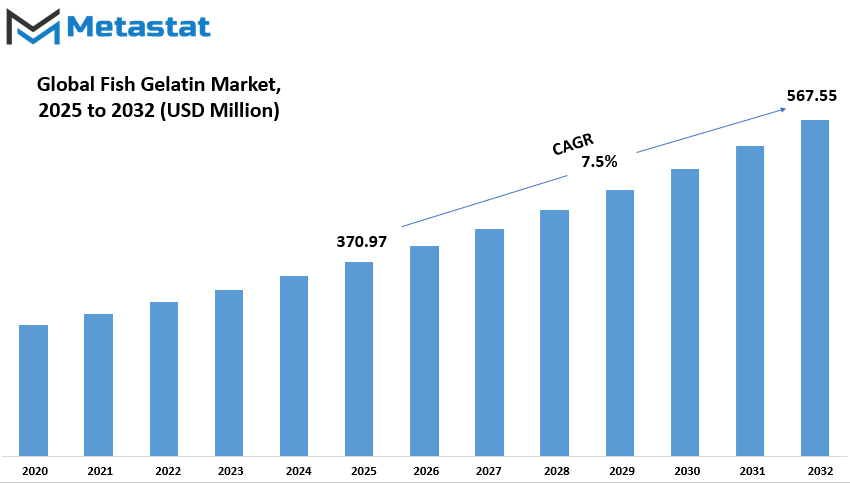
GROWTH FACTORS
The Global growth in the fish gelatin market is deeply encouraged by the constant increasing demand for its halal and kosher forms, especially in the food and pharmaceutical market segments. This force primarily stems from the growing demand for products that are religiously compliant with dietary requirements. As the number of consumers continues to rise for these compliant products, the market for halal and kosher gelatin grows as well.
The rising preference for more sustainable and alternative sources of gelatin, especially due to the growing concerns about the environmental impact of bovine and porcine gelatin, is also another aspect which will fuel the market. Fish gelatin could be one of the more viable alternatives for them.
The market also faces several challenges. The production costs are one of the major issues of fish gelatin. Since it is harder to find raw materials, it costs more than regular gelatin. This can't be done at a high industrial level because its price is too high compared with that of bovine or porcine sources. Fish gelatin also is sensitive to temperature and pH changes, thereby affecting its functional properties, thereby making it somewhat complicated for applications in certain scenarios. These can hinder the rate of growth within the market, especially if the industries emphasize cost efficiency as well as consistent products.
Applications of fish gelatin in nutraceuticals and functional foods are expanding into new opportunities and will be worthwhile for the market. It contains various bioactive components like collagen and peptides, providing different health benefits. Its properties are why it has been considered one of the main ingredients in the fast-growing nutraceutical market.
Consumers, particularly the health-conscious, are becoming increasingly interested in purchasing products that improve their general wellness. Since these consumers increasingly require functional foods with nutritional values, fish gelatin is very well-positioned to play a vital role in this market. The coming years will see the fish gelatin market continue to grow, led by these factors.
These factors, in relation to increased demand for halal and kosher-certified gelatin, use of more sustainable sources, and increased use of fish gelatin in nutraceutical and functional foods, are likely to bode well for the future. In order to sustain growth and capitalize upon new opportunities, however, the market needs to contend with issues related to the production cost, availability of raw materials, temperature sensitivity, and pH sensitivity of the products.
MARKET SEGMENTATION
By Type
The global fish gelatin market has experienced positive growth over the past few years. The primary cause for this rapid expansion of the market has been the rising requirement of gelatin across various sectors including food, pharmaceutical, and cosmetic sectors. Gel-forming properties make it an ideal substitute as it is taken from animals that could be cow or pig gelatins. It has thus led to an increase in demand, mostly from consumers searching for a product that is halal or kosher.
The fish gelatin market could be segmented under various types with respect to sources of fish products. Type A fish gelatin accounts for the largest market size, which reads $236.84 million. This type of gelatin comes from specific species of fish, such as tilapia or cod, and has a wide usage in various products owing to its adaptability and good quality. Manufacturers are increasingly opting for Type A gelatin in their products since the demand is increasing due to the need to cater to different types of consumers.
Other types include Type B and Type AB; they are lesser compared to the first type in terms of usage in the market. Type B is taken from other varieties of fish species, while Type AB is made up of gelatin from a mixture of Types A and B. These can serve specific uses in different areas and give a variety of choices to producers depending on what their production entails. Additionally, under this "Others" category come fish gelatine specialties directed specifically at niche markets and specialized formulation requirements.
With the continued growth in the demand for more sustainable and healthy products, it is expected that fish gelatin will find an even wider market. Since it is relatively low in fat and a natural source of protein, it's a healthier choice. As new technologies for the extraction and production of fish gelatin emerge, it is now becoming cheaper and more affordable to a number of industries.
The global market for fish gelatin will certainly be on a growth trend with the development of new and novel uses for it by manufacturers. Some application areas include stabilization or thickening agents in the food processing, use in pharmacy to prepare various types of capsules, and usage in cosmetics with its moisturizing effect. As consumer preferences shift towards natural and ethical options, fish gelatin offers a promising solution for businesses to meet these changing demands while keeping up with market trends.
By Source
The global fish gelatin market is a growing industry, which can be segmented into various sources. These sources are important as they determine the type and quality of gelatin produced. The major sources in this market are fish skin, fish scales, fish bones, and others. All these sources have different contributions in the production process, which changes the characteristics of the final product, such as texture and nutritional content.
Probably one of the main sources of producing fish gelatin, as used by fish manufacturers, comes from fish skin, which has plenty of collagen for extraction of gelatin. In fact, processing the species of fish such as tilapia or cod can be taken through their skins with the intent of extracting this very compound known as collagen in the process to come out with gelatin. It has gained popularity because of the high quality and all-round usefulness in food products, cosmetics, and pharmaceuticals. The extraction of gelatin from the fish skin has gradually gained popularity for providing a sustainable cost-effective alternative to mammalian gelatin.
Another important source of gelatin is fish scales. Even though they are not as commonly used as fish skin, the industry still holds them as a raw material of importance. Fish scales are highly rich in collagen and, hence, a good source for the production of gelatin. Gelatin from fish scales is mostly applied in similar uses as that of fish skin gelatin, including food additives and cosmetic formulations. Production of gelatin from fish scales reduces the amount of waste in the industry of fish processing, hence contributing to a sustainable industry.
Gelatin also finds its source from fish bones. Fish, with their large bone content, can be sourced for the extraction of collagen from their bones. The gelatin extracted from this source is widely used in food products, including soups, broths, and gummy candies, to give them the texture needed. The use of fish bones as gelatin, which would otherwise go to waste, is yet another effective way the industry can employ parts of fish that would otherwise remain unused, contributing further to its sustainability.
Other raw materials that contribute to the global fish gelatin market are other raw materials aside from these primary sources. These include by-products from fish processing and other sources of collagen that can be converted into gelatin. The variety of sources available in the market allows manufacturers to meet the diverse needs of industries that rely on fish gelatin, whether for food, medicine, or cosmetics.
In conclusion, the global fish gelatin market sources come from diverse sources in terms of fish skin, fish scales, and bones, each of which may contribute certain characters to the final product. The market has kept on growing because of the demand for sustainable alternatives, as well as increased interest in waste reduction in the food and cosmetic industries. The growth of the market can be foreseen as consumers and industries get to know more about the advantages of fish-based gelatin.
By Functionality
Due to the increase in demand for this product by several industries, the global market of fish gelatin is getting utmost importance. The skin and bones of fishes, which were only used as the basic ingredients of food and non-food products, are today fetching popularity owing to the versatility properties and sustainability compared to other sources of gelatin. The market for fish gelatin is categorized based on its functionalities, which are of prime importance in various applications.
Fish gelatin can be used as a gelling agent. It finds application in the food industry, where it produces products such as gummies, marshmallows, and jellies. With the property of forming gels on being combined with liquids, fish gelatin can be ideal for such products, in which a firm, flexible texture needs to be maintained. Among its several important reasons for preference over food-grade animal-based gelatins like bovine or porcine gelatin, it provides a much better alternative.
Another important role of fish gelatin is as a stabilizer. In dairy products, beverages, and desserts, fish gelatin ensures that the products do not separate and are maintained in a constant state. This stabilization is crucial in ensuring that products remain at the desired texture and quality for as long as possible. For instance, in the production of yogurt or ice cream, fish gelatin maintains the smooth and creamy texture even when the product has been stored for a long time.
Another common use for fish gelatin is as a thickener in different types of culinary and industrial use. It will increase the viscosity of soups, sauces, and dressings and make it feel more substantial to the palate. Its functionality as a natural thickener allows manufacturers to add the substance to products without adding a taste or flavor.
Besides these functions, gelatin from fishes is an emulsifier. It provides the ability of mixing ingredients usually not miscible, such as oil and water. Emulsifiers are indispensable in cosmetics manufacturing, pharmaceutical and personal care applications. Fish gelatin can enhance the formation of a stable suspension, thereby enhancing the smooth consistency of the product.
Generally, the fish gelatin market is on the rise due to the wide range of advantages it offers various industries. In whatever form be it gelling agent, stabilizer, thickener, or emulsifier, fish gelatin continues to prove its value and utility in every application, in line with increasing demand for green and efficient products.
By End User
This market for Fish Gelatin is increasing due to the wide range of its applications across different industries with unique needs. Fish Gelatin is made from fish collagen, and it finds application across many industries such as food and beverages, pharmaceuticals, cosmetics, among many more. Every one of these industries plays an important role in developing the market because they make use of the natural properties of fish gelatin differently.
The use of fish gelatin is prevalent in the food and beverage industry primarily due to its gelling, thickening, and stabilizing properties. This substance is contained in an enormous array of food items like gummy candies, marshmallows, yogurt, and desserts. Food markets show growing interest in the demand for fish gelatin, since the customers, on some regional diets, require alternative sources of gelatin other than beef or pork. There is increasing demand for healthier options, so fish gelatin is certainly a better player in the food and beverage industry.
Fish gelatin is also used in the pharmaceutical industry in producing forms of medicine. It is added to drugs to be turned into capsules, tablets, and more. Some of the benefits that come with using fish gelatin include its natural origin and the body's ease of assimilation. It is an appropriate alternative for the preparation of soft gels, which are more desirable in the easily swallowed form and have better bioavailability of the active ingredient. Furthermore, fish gelatin is seen as a greener and more ethical alternative compared to other animal-derived sources of gelatin, thus making it a desirable adjunct to pharmaceutical preparations.
In cosmetics, fish gelatin is a crucial component of skin care and cosmetic products. It is valued for its collagen content, providing much better elasticity, hydration, and general appearance in the skin. Fish gelatin has become a frequent application in face masks, moisturizers, and anti-aging treatments. Usage of cosmetics is increasing since people become aware of more natural, cruelty-free products. This ability of fish gelatin to promote healthy skin has driven its demand in the beauty industry, where consumers are now seeking products that work and do not harm their skin.
The "others" category contains many applications with diverse uses where fish gelatin is applied, such as in photography, textiles, and biotechnology, amongst others. Such industries rely on the multiple functions of fish gelatin to serve their specific needs, thereby further contributing to the growth of the global market. The demand for fish gelatin is likely to continue rising as these industries expand and consumers seek natural, sustainable, and ethical alternatives in their products.
|
Forecast Period |
2025-2032 |
|
Market Size in 2025 |
$370.97 million |
|
Market Size by 2032 |
$567.55 Million |
|
Growth Rate from 2024 to 2031 |
6.3% |
|
Base Year |
2024 |
|
Regions Covered |
North America, Europe, Asia-Pacific, South America, Middle East & Africa |
REGIONAL ANALYSIS
The global market of Fish Gelatin can be divided into several geographical regions and forms a specific market that has its own nature. North America is further divided into the United States, Canada, and Mexico, and Europe is divided into the major countries of the UK, Germany, France, Italy, and other European nations. The big, diversified Asian market comprises giants such as India, China, Japan, and South Korea besides the rest in the broad Asian Pacific region.
There is the South American market, encompassing countries such as Brazil and Argentina; then the Middle East and Africa with several major segments, namely, GCC countries, Egypt, South Africa, and other countries within the greater Middle East and African regions.
In this regard, the demand for the product along with the regional trends in demand shape the whole scenario concerning fish gelatin production, distribution, and consumption. The North American market, with advanced healthcare and food industries, represents a steady consumer of fish gelatin in such applications as food and beverages, cosmetics, and pharmaceuticals. Europe also is a significant market for fish gelatin. There is a strong food industry here, and consumers are beginning to prefer gelatin derived from fish rather than traditional bovine or porcine sources.
The Asia-Pacific market is huge and booming fast due to the growth of the food processing industry in this region and the expanding awareness about the benefits of fish gelatin. China and India are of huge importance because of their enormous population and growing disposable incomes, thus creating greater demand for health supplements and functional foods. South Korea is also a significant player in the food and pharmaceuticals industries.
The market for fish gelatin in South America is smaller but growing steadily. Major consumers are Brazil and Argentina, where fish gelatin is applied in the food and cosmetics industries. The Middle East and Africa are a developing market, though promising, mainly due to the increase in demand for dietary supplements and pharmaceutical products in South Africa and Egypt.
Overall, the global fish gelatin market is defined by the unique requirements and trends in each region. Growth in this market will be driven by the increasing preference of consumers for sustainable, animal-friendly alternatives, as well as the expanding applications of fish gelatin across different industries.
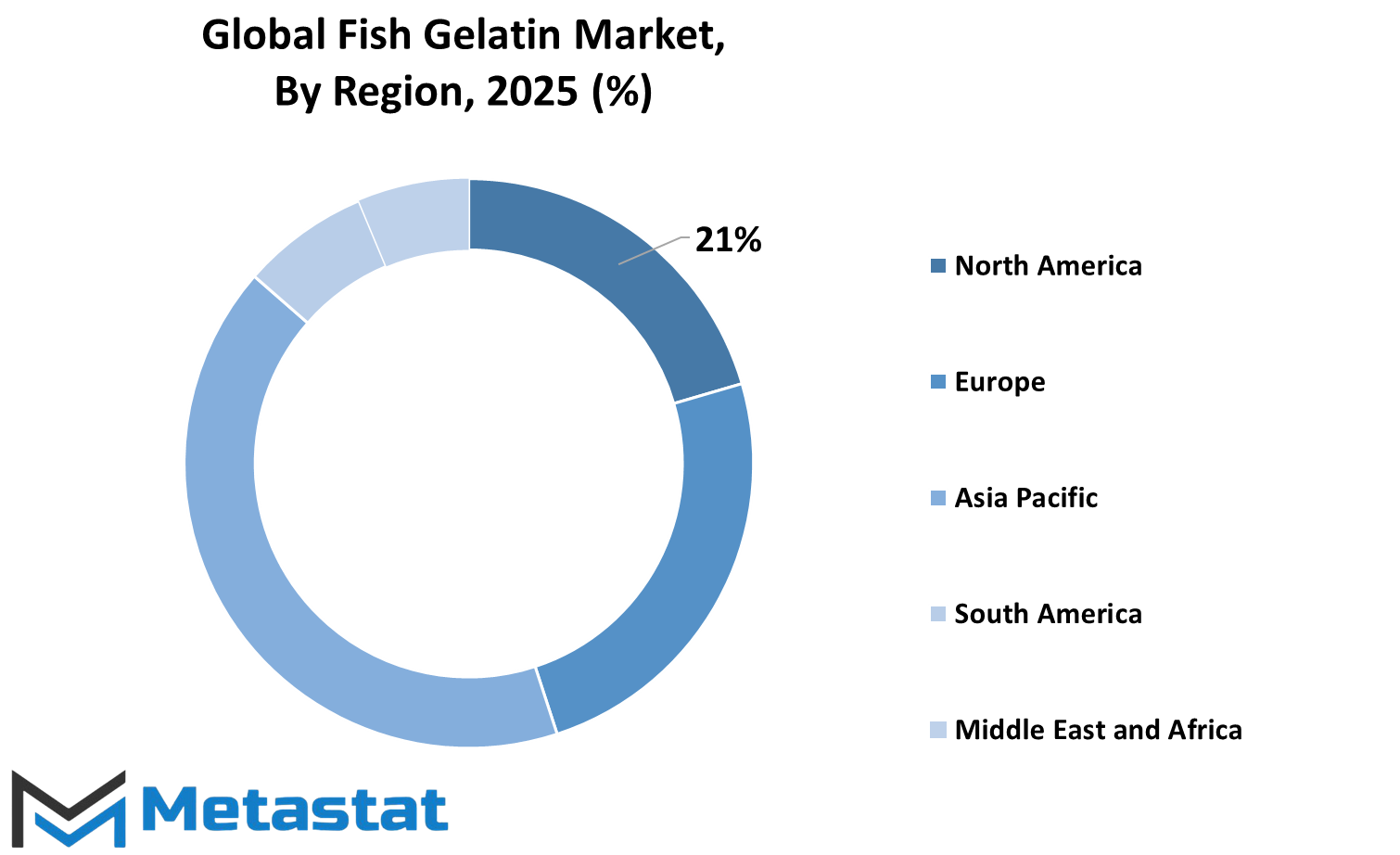
COMPETITIVE PLAYERS
As demand from industries of various kinds for natural and sustainable products is growing, the global fish gelatin market is recording tremendous growth. This fish gelatin is extracted from fish skin and bones and has gained popularity because of its superior properties as a natural, highly soluble, and versatile alternative to other gelatin sources, including pork and beef gelatin. It is used in a wide spectrum of applications, ranging from food products to pharmaceuticals, cosmetics, and dietary supplements.
The key participants in the market of fish gelatin are working in tandem to raise production to the new levels driven by demand as well as improve the product offer by innovation. Key players such as Gelita AG, Lapi Gelatine S.p.A., Weishardt Group, Norland Products Inc., Kenney & Ross Limited, Foodchem International Corporation, Athos Collagen Pvt. Ltd., and Geltech have been adopting the right kind of strategies to gain market shares as well as serve the complex demands of end users.
GELITA AG, one of the market leaders, is known to have a highly diversified product line, including food and health applications of fish gelatin. The prominent position of LAPI GELATINE S.P.A. focuses on the manufacture of high-class fish gelatin, which matches the requirements for application in both the food and pharmaceutical industries. Weishardt Group, with a strong presence in the gelatin industry, has fish gelatin products for use in confectionery, food processing, and medical capsules.
Other companies, including Norland Products Inc. and Kenney & Ross Limited, have also been established as important players in the fish gelatin sector. These companies specialize in offering the best products with very high quality standards, hence the demand is quite high from the customers in both food and pharmaceutical industries. Foodchem International Corporation and Athos Collagen Pvt. Ltd. are also helping in the growth of the fish gelatin market through innovative and sustainable solutions for the increasing demand of natural ingredients.
In addition, Geltech is another critical player in the fish gelatin industry. This company focuses on sustainable resources that ensure fish gelatin products meet the growing demand for natural and eco-friendly ingredients globally. As more industries understand these benefits of fish gelatin, the market size will be expected to continue growing, with the key players at the front of this change.
Fish Gelatin Market Key Segments:
By Type
- Type A
- Type B
- Type AB
- Others
By Source
- Fish Skin
- Fish Scales
- Fish Bones
- Others
By Functionality
- Gelling Agent
- Stabilizer
- Thickener
- Emulsifier
- Others
By End User
- Food and Beverage
- Pharmaceuticals
- Cosmetics
- Others
Key Global Fish Gelatin Industry Players
- Gelita AG
- Lapi Gelatine S.p.A.
- Weishardt Group
- Norland Products Inc.
- Kenney & Ross Limited
- Foodchem International Corporation
- Athos Collagen Pvt. Ltd.
- Geltech
WHAT REPORT PROVIDES
- Full in-depth analysis of the parent Industry
- Important changes in market and its dynamics
- Segmentation details of the market
- Former, on-going, and projected market analysis in terms of volume and value
- Assessment of niche industry developments
- Market share analysis
- Key strategies of major players
- Emerging segments and regional growth potential




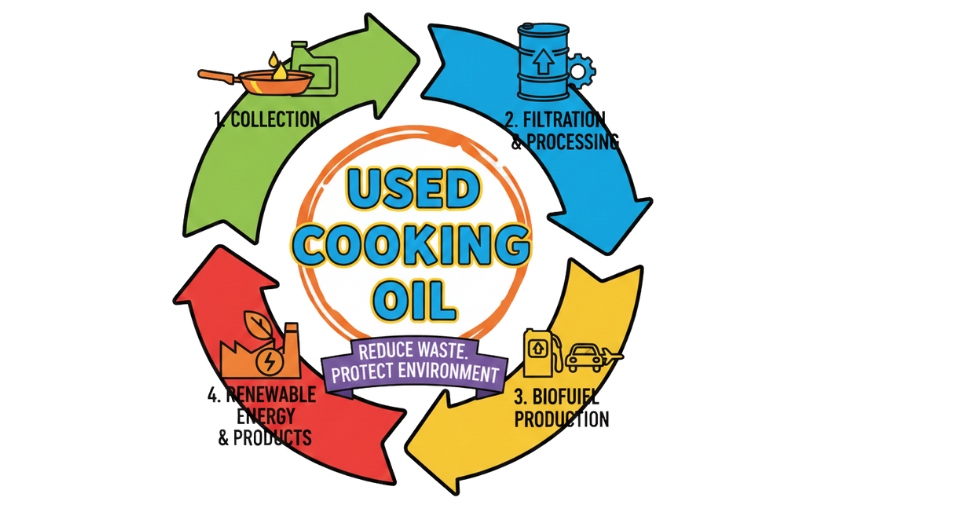
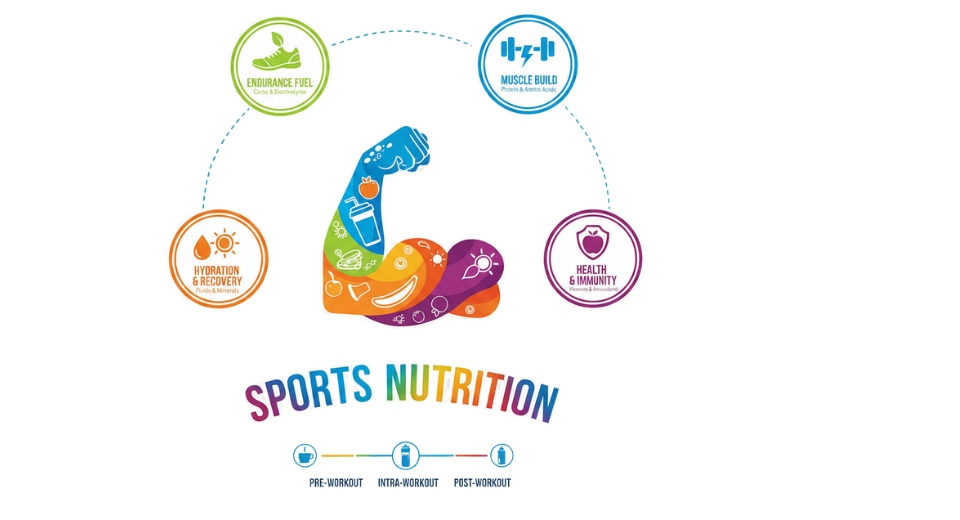
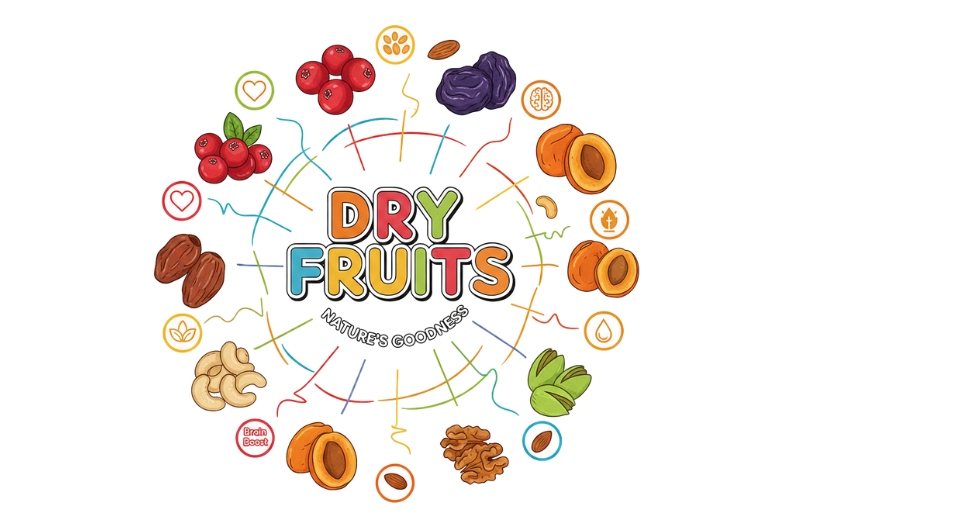

 US: +1 3023308252
US: +1 3023308252






